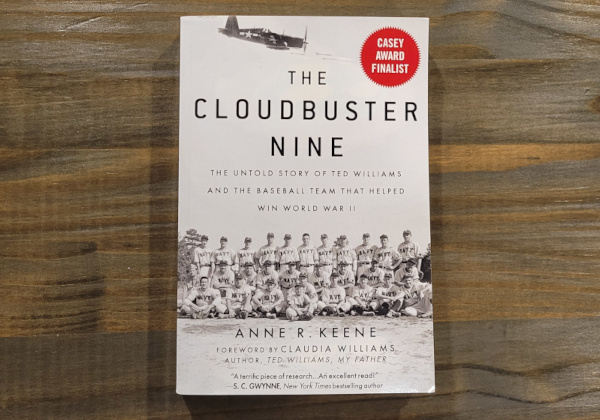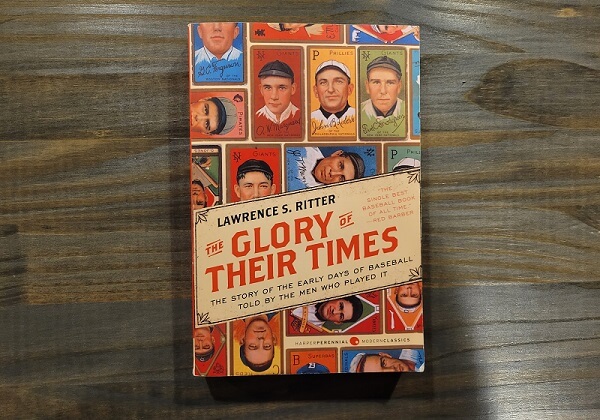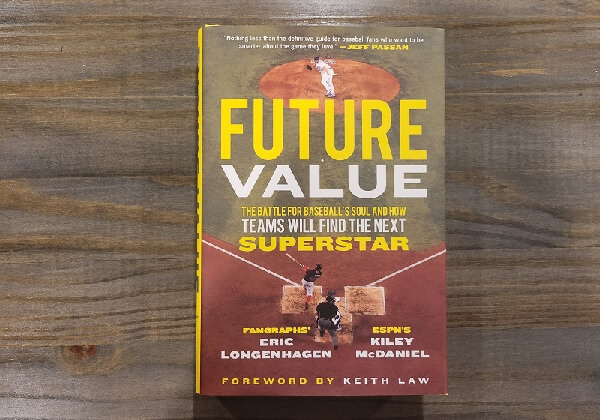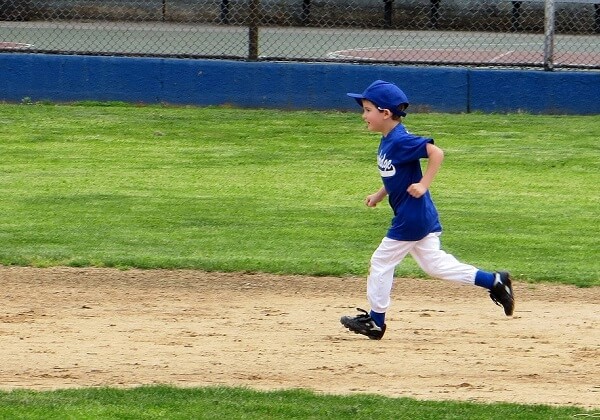Worst MLB #1 overall picks: these 7 really didn't pan out
by Fred Hofstetter on April 5, 2020You may struggle to recall these first round #1 picks in the MLB draft. 1st overall picks typically become A-grade big league players. But not these guys.
Baseball is hard. Even the best of the best have terrible days. Some, months. Most who try never get to the highest level. Some have the physical tools but not the mental. Some the mental, not the physical. Some have both—but a freak accident or catastrophic injury changes everything in minutes.
First overall picks in the MLB draft are meant the be the safest bets.
Guys at this level go first on both real and mock drafts. There’s not usually much debate at the tippy-top. They get big money with big salary potential. Hopes are high. The hype is real. However, the MLB draft is one of the least predictable of any major sports league, and while most number one overall picks wind up as productive big leaguers (and sometimes Hall of Famers), flame-outs scatter the list.
It’s not really fair to call them busts. And it’s not fair to call the teams who picked them failures. But life isn’t fair and neither is baseball. The players are busts; the teams were failures. Whiffing on a first overall pick misses an immense opportunity.
There are only three first overall picks who have never reached the major leagues (recent active draftees since 2014 not included). You will find each on this list. Pardon the lack of mercy—these are some of the biggest busts in the sport’s history.
1. Mark Appel
- Year of pick: 2013
- Drafted by: Houston Astros
- Position: Starting pitcher
- Age when drafted: 21
- Contract: $6.35 million signing bonus1
- Career WAR: N/A
- View Appel’s historical prospect rankings here
The Astros picked Mark Appel with the first overall pick in the 2013 draft, one year after being selected at #8 by the Pittsburgh Pirates. A prototypical big right-hander with the power profile at 6-5, 220.
Appel never completed a full, inspiring campaign in the minor leagues. A combination of an appendectomy, an extraordinarily pro-hitting environment, and a piggybacking system to which he couldn’t adjust resulted in an awful 2014 season between high-A and AA.2
His $6.35 million in compensation wound up returning nothing on the Astros’ investment. He was eventually traded to the Phillies. Despite the change of scenery, Appel never built any momentum. After succumbing to multiple shoulder and elbow injuries over the following seasons, Appel’s performance never improved as he entered his mid-20s.3
In February of 2018 Appel stepped away from baseball indefinitely. Never to reach the major leagues.
As of this writing Appel is set to turn 29 in a few months. His baseball future appears dead. But any human being capable of being drafted #1 overall in the MLB draft is capable of extraordinary things (see: Matt Bush).
I’ll quietly root for a comeback.
Who was drafted later in the first round? Carlos Rodon (3), Kyle Schwarber (4), Aaron Nola (7), Michael Conforto (10), Trea Turner (13), Matt Chapman (25), Luke Weaver (27).4
2. Matt Bush
- Year of pick: 2004
- Drafted by: San Diego Padres
- Position: Shortstop
- Age when drafted: 18
- Contract: $3.15 million signing bonus5
- Career WAR: 2.6
Matt Bush has put together one of the more unique careers in baseball history. Drafted first overall by the San Diego Padres as a shortstop in 2004. In prison in 2012 before ever reaching the major leagues.6 Back to professional ball to make his major league debut as a relief pitcher in 2016 at 30 years old.
Bush was never much of a hitter in his age 18-21 seasons in the minor leagues, only once surpassing an on-base percentage of .300 with no power to speak of. So he tried pitching. After Tommy John in 2007/2008, getting DFA’d in 2009 after assault allegations from an incident involving alcohol, he missed the entire 2009 season.7 The Rays picked him up in 2010 and game him a shot to get his career back on track.
In 2012 he ruined that chance. Bush nearly killed a motorcyclist while driving under the influence in Florida. Bush fled and resisted arrest, eventually charged with a few felonies and sentenced to over 4 years in prison.
Bush pushed the reset button while in prison. Incredibly, the Texas Rangers, perhaps emboldened by their success with Josh Hamilton, “found” Bush a few years later:
“Three years later, at a work-release program in Jacksonville, he would pitch in the parking lot of a Golden Corral restaurant, using a concrete parking block to push off with his back leg. The ball exploded from his arm, with accuracy. The next year he was a vital member of the Rangers’ bullpen, armed with one of the hardest fastballs in the majors.”8
That happened fast, didn’t it?
Bush made only 12 appearances with AA-Frisco before making his major league debut in May of 2016. He finished the season with 61.2 IP, an ERA of 2.63, and a WHIP of 0.941. He regressed a bit in 2017 before again getting bit by the injury bug.
At 33 years old Bush is still at it. In July of 2019 he underwent Tommy John surgery and will likely miss however much baseball season we get in 2020.9 His career survives. The roller coaster, for now, is at least on the tracks if only crawling.
He’s not too old re-capture some of the fire. But the chance of living up to the #1 overall pedigree has long passed.
Who was drafted later in the first round? Justin Verlander (2), Jeff Niemann (4), Homer Bailey (7), Neil Walker (11), Jered Weaver (12), Billy Butler (14), Stephen Drew (15), Trevor Plouffe (20), Glen Perkins (22), Phil Hughes (23).10
3. Bryan Bullington
- Year of pick: 2002
- Drafted by: Pittsburgh Pirates
- Position: Starting pitcher
- Age when drafted: 22
- Contract: $4 million signing bonus11
- Career WAR: -0.3
The first round of the 2002 draft wound up loaded with solid big-league talent. But the first overall pick was a whiff.
The Pirates missed on Bryan Bullington. Another tall right-handed power profile type starting pitching prospect, Bullington couldn’t be fast-tracked to the big leagues after dominating with Ball State University and putting together a solid first pro season in A ball.
Bullington worked his way to the major leagues for his cup-of-coffee September debut with the Pirates in 2005, but underwent surgery to repair a torn labrum in the offseason immediately after and missed the entire 2006 season. He would never recover his top prospect status.
After an uninspiring 2007 spent mostly with the Pirates’ AAA affiliate, Bullington bounced around with the Indians, Blue Jays and Royals from 2008-2010. The Royals rewarded his success in AAA in 2010 with an extended look back in the bigs, only to be disappointed with a dismal 6.12 ERA and 1.594 WHIP as a reliever/spot starter over 42.2 IP.
Bullington would never pitch again in the majors.
Who was drafted later in the first round? B.J. Upton (2), Zack Greinke (6), Prince Fielder (7), Jeff Francis (9), Joe Saunders (12), Khalil Greene (13), Scott Kazmir (15), Nick Swisher (16), Cole Hamels (17), James Loney (19), Denard Span (20), Jeremy Guthrie (22), Jeff Francoeur (23), Joe Blanton (24), Matt Cain (25).12
4. Matt Anderson
- Year of pick: 1997
- Drafted by: Detroit Tigers
- Position: Relief pitcher
- Age when drafted: 21
- Contract: $2.5 million signing bonus13
- Career WAR: -0.6
Another big, power right-handed pitcher. Starting to see a pattern here.
Most of the guys up to this point had long, arduous journeys to the big leagues (if they made it at all). Anderson made it almost immediately.
Drafted out of Rice University at 21 years old, the Tigers didn’t need much convincing to get him in the big league bullpen. Anderson put together 41 completely dominant innings between high-A and AA in his first pro season and made his MLB debut in June of his very first season. Anderson had substantial control issues (31 BB in 44 IP) but finished the season with a respectable 3.27 ERA for the Tigers.
It could be the good results in terms of runs allowed masked larger issues that never got fixed. Anderson seriously regressed in his age 22 season, logging a whopping 8.3 BB/9 with the Tigers and a 5.68 ERA that feels more in line with his peripherals.
Anderson floundered for a few more seasons with the Tigers before changing scenery with the Colorado Rockies. Not great scenery for a pitcher. He got shellacked in 10 innings with the Rockies and never made it back to the bigs.
Who was drafted later in the first round? J.D. Drew (2), Troy Glaus (3), Jason Grilli (4), Vernon Wells (5), Michael Cuddyer (9), Jon Garland (10), Lance Berkman (16), Jayson Werth (22).14
5. Paul Wilson
- Year of pick: 1994
- Drafted by: New York Mets
- Position: Starting pitcher
- Age when drafted: 21
- Contract: $1.5 million signing bonus15
- Career WAR: 2.0
Paul Wilson spent several years in the majors between the Mets, Devil Rays and Reds. This is one of those where I get a little squeamish to call a guy a “bust” since he did at least prove serviceable in his age 27-32 seasons as a back-end starter.
However, for a first overall pick this was a misfire. Wilson spent several years in the minors with the Mets after being drafted #1 out of Florida State University at 21. His rookie season with the Mets in 1996 was a bit of a flop, with rough peripherals (1.530 WHIP) and bad results (5.38 ERA) in 26 starts.
He spent a couple years in the minors before succumbing to injury and missing all of 1999.
The Devil Rays picked him up for the 2000 season and Wilson had a nice recovery, starting 18 games and finishing with an ERA under 4. The strikeout-getting flash he showed early in the Mets’ lower levels never translated to the bigs. He kept his place in the starting rotation for the Devil Rays and Reds from 2001-2005, but never surpassed “innings-eating” type performance.
This isn’t a tragic story of great potential turning sour. But Wilson didn’t deliver what the Mets were hoping for.
Who was drafted later in the first round? Ben Grieve (2), Todd Walker (8), C.J. Nitkowski (9), Jaret Wright (10), Nomar Garciaparra (12), Paul Konerko (13), Jason Varitek (14), Scott Elarton (25).16
6. Brien Taylor
- Year of pick: 1991
- Drafted by: New York Yankees
- Position: Starting pitcher
- Age when drafted: 21
- Contract: $1.5 million signing bonus17
- Career WAR: N/A
This time, a big power lefty pitcher makes the list.
Ranked as Baseball America’s #1 prospect in 1992, Brien Taylor appeared prime for big-time greatness in pinstripes.18 He was considered one of the better pitching prospects ever.19 A big lefty who throws 98 with a good curveball and changeup at 20 years old deserves the hype.
Drafted out of high school, Taylor put up some flashy numbers between high-A and AA for the Yankees in his age 20 and 21 seasons. Then his career went off the rails.
In 1993 Taylor got into a brutal trailer park fight and wound up dislocating his shoulder and tearing his labrum. According to Martin Stezano at Fansided:
“Taylor had surgery later that month, and missed all of the 1994 season while recovering. When he returned in 1995, he was a shadow of his former self. Taylor’s once electric fastball was barely touching 90 mph, and his already spotty control all but deserted him. Unfortunately for Taylor, he would never make it past A-ball again.”20
After floundering in the minors for several years, Taylor hung ‘em up in 2001.
This might be the biggest bust on the list given the culprit of his downfall – just a few minutes comprising some bad decisions and a freak accident derailing a potentially incredible career.
He’s just one of three first overall picks to never reach the majors (counting Mark Appel).
Who was drafted later in the first round? Dmitri Young (4), Tyler Green (10), Shawn Estes (11), Doug Glanville (12), Manny Ramirez (13), Cliff Floyd (14), Shawn Green (16), Eduardo Perez (17), Benji Gil (19), Pokey Reese (20), Aaron Sele (23).21
7. Steven Chilcott
- Year of pick: 1966
- Drafted by: New York Mets
- Position: Catcher, first baseman
- Age when drafted: 17
- Contract: $75K signing bonus22
- Career WAR: N/A
Reaching way back to the second 1st overall pick of all time.
He’s the third and final member of the list who never made the big leagues. The only one on this list with a signing bonus in the thousands.
Drafted at only 17 years old, put Chilcott on the list of players whose careers were derailed by injuries. A recurring shoulder issue never went away.
Chilcott was in the middle of a promising age 18 season when he suffered an injury he would never shake. He dove back into second base on a pickoff play awkwardly and suffered a “chronic recurrent posterior semi-dislocation.”23
That’s scary-sounding for any athlete. But especially for catchers.
He never recovered. He tried surgery, but the injuries began mounting. An infection in his shin, a broken hand. All with continued shoulder pain.
He was done at 24.
Of all the “wow, that team sure whiffed” this might be the worst. Reggie Jackson went at #2.
Who was drafted later in the first round? Reggie Jackson (2), Wayne Twitchell (3), Ken Brett (4), Tom Grieve (6), Al Santorini (11), Gary Nolan (13), Richie Hebner (15), Carlos May (18).24
Notables, pre-1990
- Shawn Abner. New York Mets (1984). -1.3 career WAR.
- Al Chambers. Seattle Mariners (1979). -0.5 career WAR.
- Danny Goodwin. California Angels (1971, 1975). -1.7 career WAR.
- David Clyde. Texas Rangers (1973). 0.6 career WAR.
- Dave Roberts. San Diego Padres (1972). 0.4 career WAR.
FAQ
What percentage of MLB first round picks make the majors?
According to Baseball America, 73 percent of first round picks from 1981-2010 have reached the major leagues. Higher than I thought when I looked this up, honestly.
The list of first overall picks by year?
Here’s a list from Wikipedia. Here’s a good article from MLB.com that provides some brief descriptions of these guys’ careers.
What is the typical signing bonus for first overall picks?
As you might expect, compensation has always been on the rise. In the 2000s, about $3-7 mil; 1990s, $1-3 mil. There’s a really good tracker here although it’s only updated through 2010.
MLB has changed the rules and now there are slot values at each pick. For instance, the first overall pick slot amount in 2019 was $8,415,300 – and their pick Adley Rutschman signed for $8.1 million. Expect that number to rise every year. It’s been incrementally rising for about 40 years.
Interestingly, it’s not all that uncommon for someone picked later than #1 overall to earn a higher signing bonus. The most stark example being Matt White earning a $10.2 million signing bonus from the Rays in 1996 vs. Kris Benson at first overall earning $2 million.
Some teams at #1 overall (or any other position in round 1) might fear a more talented guy may not sign at all or demand too much $$ to sign. Keep in mind smaller market teams tend to find themselves with the #1 pick vs. larger market teams like the Dodgers, Yankees, Red Sox, etc. There is a lot of pressure to lock down a franchise-shifting cornerstone at #1 and it’s not a good look if you can’t even sign the guy.
How many first overall picks are in the hall of fame?
There are only 3 first overall picks who are in the hall of fame:
- Harold Baines (1977)
- Ken Griffey Jr. (1987)
- Chipper Jones (1990)
Who else might make it? Who knows. Alex Rodriguez jumps off the list, but the steroid cloud will probably keep him out—although he is working his tail off to rehabilitate his public image to get the fans on his side. These active players are really good at baseball: Justin Upton, David Price, Stephen Strasburg, Bryce Harper, Gerrit Cole, Carlos Correa. I’d guess none of them make it, but stranger things have happened.

References & notes
Mark Appel |
|
| 1 | MLB.com. Link. |
| 2 | bleacherreport.com. This one gets into Appel’s background a bit more. A mini bio. Link. |
| 3 | thatballsouttahere.com. Link. |
| 4 | wikipedia.org. Link. |
Matt Bush |
|
| 5 | baseballamerica.com. Link. |
| 6 | foxsports.com. Link. |
| 7 | sportingnews.com. Link. |
| 8 | Tyler Kepner, A History of Baseball in Ten Pitches (New York, Doubleday, 2019), 60. |
| 9 | MLB.com. Link. |
| 10 | wikipedia.org. Link. |
Bryan Bullington |
|
| 11 | perfectgame.org. Link. |
| 12 | wikipedia.org. Link. |
Matt Anderson |
|
| 13 | perfectgame.org. Link. |
| 14 | wikipedia.org. Link. |
Paul Wilson |
|
| 15 | perfectgame.org. Link. |
| 16 | wikipedia.org. Link. |
Brien Taylor |
|
| 17 | perfectgame.org. Link. |
| 18 | baseball-reference.com. Link. |
| 19 | yanksgoyard.com. Here’s a sad story. Link. |
| 20 | yanksgoyard.com. Link. |
| 21 | wikipedia.org. Link. |
Steve Chilcott |
|
| 22 | perfectgame.org. Link. |
| 23 | latimes.com. Link. |
| 24 | wikipedia.org. Link. |
The latest articles

Book Review: The Cloudbuster Nine - by Anne R. Keene
by Fred Hofstetter on January 30, 2024Keene's comprehensive book tells several stories behind the V-5 Pre-Flight School in Chapel Hill, North Carolina: home to one of the rarest, greatest baseball teams in American history.

Book Review: The Glory of Their Times
by Fred Hofstetter on February 11, 2023There's good reason why The Glory of Their Times appears on every "best baseball book of all time" list you'll find anywhere.

Book Review: Future Value - Eric Longenhagen & Kiley McDaniel
by Fred Hofstetter on January 8, 2023Discover how amateur and pro baseball scouting is done, how departments are built, and how organizations find talent in Future Value.

Baseball players wear hats because wearing a hat is correct
by Fred Hofstetter on April 9, 2022Practicality explains why baseball players may want to wear a billed cap. But why does every player always wear a hat? Because it’s the right thing to do.

